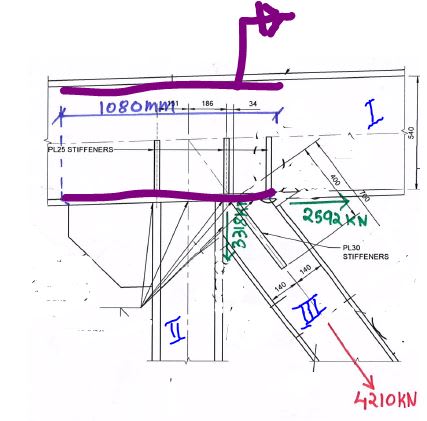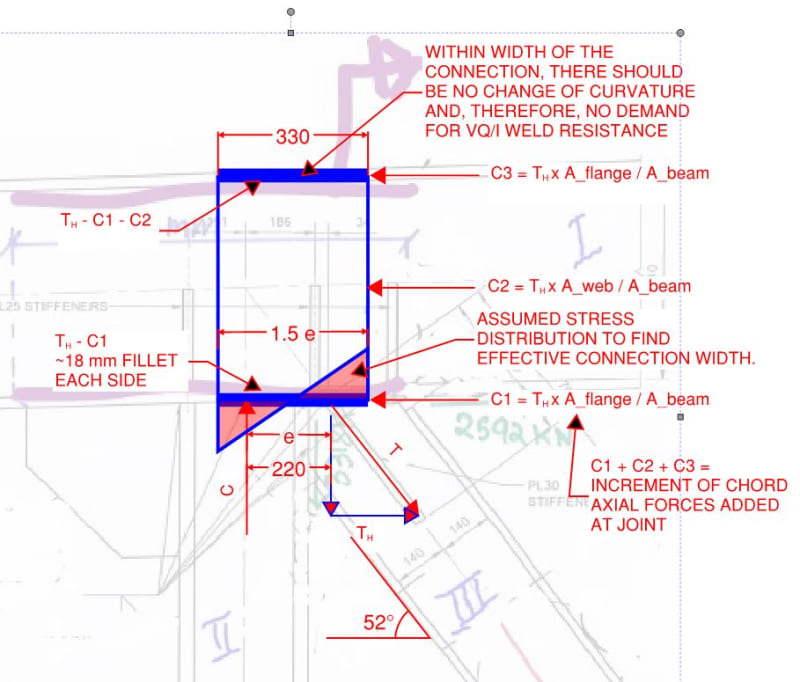ChrisToms
Structural
- Sep 6, 2011
- 4
Hi all steel experts there..
Below shown is connection for truss.
My primary objective is to check the adequacy of weld (in purple)
Member I is top chord of truss, II vertical and II diagonal truss member.
We have shear force on member I at the location of connection, say 300kN (this will include the contribution from diagonal as well since the shear is extracted from global analysis line model)
My question is, for a plated section we normally check the shear stress (VQ/Ib) at the weld location and check if the weld is able to carry that.
But in this case, do we need to consider the local force flow, that is, the axial force on diagonal is 4210kN and is the horizontal component of this force to be added with force contributed by longitudinal shear stress?

Below shown is connection for truss.
My primary objective is to check the adequacy of weld (in purple)
Member I is top chord of truss, II vertical and II diagonal truss member.
We have shear force on member I at the location of connection, say 300kN (this will include the contribution from diagonal as well since the shear is extracted from global analysis line model)
My question is, for a plated section we normally check the shear stress (VQ/Ib) at the weld location and check if the weld is able to carry that.
But in this case, do we need to consider the local force flow, that is, the axial force on diagonal is 4210kN and is the horizontal component of this force to be added with force contributed by longitudinal shear stress?


